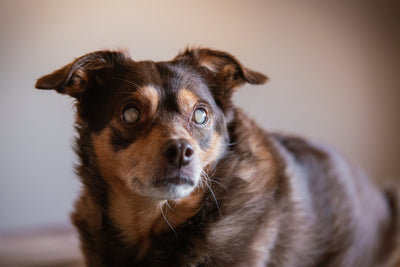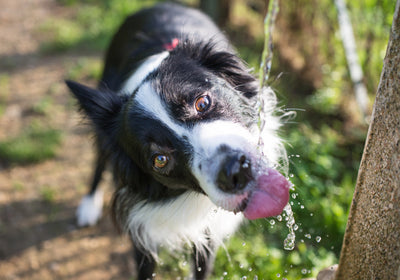My Dog Has a Runny Nose – Should I Be Worried?

Just like us, dogs get running noses for a variety of reasons. Knowing what the possible causes may be and what else to look for can help you decide whether or not your dog needs immediate veterinary treatment or not.
A “running” nose means there is some type of discharge coming from your dog’s nose. There are many types of discharge, some of them indicate more serious conditions than others. Here is a rundown on types of discharge and what could be causing them.
Clear. Like us, clear discharge is a normal occurrence in dogs and is usually nothing to worry about. However, environmental allergies can cause an increased volume of clear discharge, so if your dog seems to have more than usual and it’s not going away (or appears when you go outside, are near someone smoking, etc.), he may have allergies.
Note: some breeds, especially flat-nosed, tend to have more nasal discharge than the average dog. This is something you are going to have to monitor for your individual dog and figure out what’s normal for him. So then, if something changes, you will know.
Thick, Colored Mucus. If your dog’s mucus is thick and a color – cloudy, yellow, green, etc. – then that’s a sign there is more going on than allergies. This could be a sign of a bacterial, fungal or viral infection. Often there is a bad odor as well. Distemper can cause a yellow nose discharge. Parvo can cause a running nose in puppies, so if you see this, take your young dog to the vet immediately.
Discharge From One Side. If your dog’s nose is only running on one side, they may have something blocked on the other side. This is probably a good time to visit the vet to have it removed safely. Even minor trauma can cause excessive bleeding from inside the nose, so things have to be removed carefully.
Blood. Blood can be coming out of your dog’s nose as a result of trauma, just like when we hit our nose. This can be mild to severe requiring vet attention. As mentioned above, a foreign object stuck in the nose may also cause bleeding. Finally, bleeding can also be a sign of a tumor (cancerous or benign) or nasal polyps (overgrown mucus-producing glands) in the nasal cavity.
Dogs with a cleft palate or fistula – hole in the mouth – may have discharge after he eats. The discharge may come from both sides of the nose or just the one side where the hole is located.
Knowing a bit more about your dog’s nose and what any discharge may indicate can help you make the right decision whether to take them to the vet or not. For illness like distemper and parvo, even just a day or two can be the difference between life and death, so this is important information to know. Remember, pay attention to your dog when he is healthy so you can tell right away when something changes.








